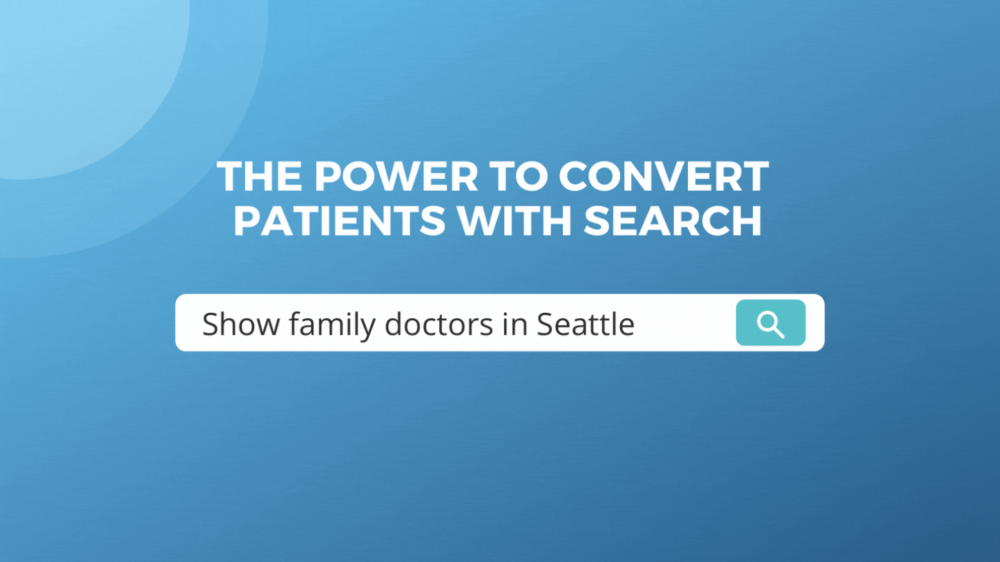The Gap in Your Care Search Experience and How to Fix It
The power of search
Individuals have become accustomed to using search engines as their primary gateway to answer questions and get to their desired destinations. Consumers expect intuitive, easy-to-use search technology that can provide them with accurate and relevant results.
If you visit any major website these days, especially e-commerce sites, you immediately see a prominent on-site search bar where visitors can type in what they are looking for and instantly get served top results based on their interests.
Search is a highly efficient and effective time saver we all rely on.
 What patients expect
What patients expect
For two decades, Google has been the world’s dominant search engine. So it is unsurprising that our expectations for search have been shaped by that experience. Google has a relatively simple page with a single search bar that retrieves the most relevant, accurate results based on their query. With that context in mind, we are also used to search engines having a number of useful features, such as:
- a single place to find results;
- the ability to use conversational/natural language;
- location-based results;
- the ability to use abundant filters to narrow down results;
- and a strong error tolerance.
The role of search in healthcare
Health systems have a tremendous opportunity to leverage a universal search bar to expertly and efficiently guide visitors to relevant results just like consumers have come to expect when visiting Amazon, Nike, Best Buy, or Lowe’s.
However, often, healthcare search is limited to finding providers or locations — both critical functions. But what about someone looking for same-day appointments, doctors that speak Spanish, the nearest location, or information about a condition? Bridging the gap between intent and results requires a multi-step process — using different search interfaces — that rely on filters. This is often a time-consuming, difficult process.
The results may be irrelevant, or too many to sift through. These hurdles when a consumer is looking for care and wants to book an appointment can be a turnoff. It can have a negative effect on conversions and may lead to site abandonment. Customers expect a frictionless experience, and search should be a powerful tool to optimize the digital front door.
A fresh approach to healthcare search
Search can now be a gateway to field a patient’s needs. Instead of separate funnels — like Find a Doctor and locations — a single search bar, from any page, can surface the right line of care, and the right results, all based on the individual’s intent.
DexCare’s Omni Search uses built-in logic to determine patient intent and route them to appropriate care options – results can include relevant providers, locations, available telehealth options, or the next available appointment at the nearest clinic. With Omni Search, when someone searches for a doctor, they find doctor profiles. A medical condition can surface doctors that specialize in that condition and related articles. Customers looking for same-day care, see nearby clinics with available timeslots.
Omni Search delivers a modern digital experience — with a hint of retail best practices — and gives health systems the ability to streamline the process of converting inbound demand.
The next evolution of creating a frictionless digital front door should include providing a modern search experience that consumers expect. A fresh take on search is here, and it couldn’t come at a better time, as retail and healthcare blend and the expectations of how and where care is offered are changing rapidly.
Curious about the impact of adding a modern search experience? Read this case study: Large, Regional Health System Increases Conversion Rate by Modernizing its On-site Search Experience